We Use CookiesWe use cookies to enhance the security, performance,
functionality and for analytical and promotional activities. By continuing to browse this site you
are agreeing to our privacy policy
10 Best Soil Ph And Moisture Meters
From leading brands and best sellers available on the web.Buying Guide for the Best Soil Ph And Moisture Meters
Soil pH and moisture meters are handy tools for gardeners, farmers, and anyone who wants to better understand and care for their plants. These devices help you check two major factors for plant health: the acidity or alkalinity of your soil (pH) and how wet or dry it is (moisture). When picking a meter, focus on what you need to measure, how often you'll use it, and how much detail or ease-of-use matters to you. Carefully matching your choice to your gardening style and crop types will help you get the best results and healthier plants.pH Range and AccuracyThe pH range tells you what levels of soil acidity or alkalinity the meter can measure. Most plants do best in soil with a pH between 6 and 7.5, though some need more acidic or more alkaline conditions. A meter with a broad range (example: 3-10) can handle various plant types and conditions. Accuracy is important because even small changes in pH can affect plants; look for meters with a low error margin for more trustworthy readings. If you grow sensitive or specialty plants, aim for higher accuracy, but for basic gardening, a standard range and accuracy usually suffices.
Moisture Measuring CapabilitySome meters just measure pH, while others also measure moisture. The moisture sensor indicates how wet or dry the soil is, which is crucial for proper watering. Most meters provide readings as numbers or descriptive levels like 'dry,' 'moist,' or 'wet.' For houseplants or picky crops, a more precise numerical moisture reading helps prevent over- or under-watering. For basic outdoor use, a simpler scale might be fine. Consider your plants' watering needs: the more specific and variable they are, the more detailed your moisture readings should be.
Type of ProbeSoil meters can have single or multiple probes, usually metal. Multiple-probe meters may measure both pH and moisture at once, while single probes often focus on just one function. Longer probes help you reach roots for larger pots or garden beds, while short ones suit smaller pots. Choose based on your typical plant sizes: if you have big plants or deep beds, look for a longer or multi-function probe.
Readout DisplayReadings are typically shown on an analog dial or a digital display. Analog meters are simple and durable but sometimes harder to interpret precisely. Digital displays are easier to read and often give more exact numbers. If you like quick, glanceable information, analog works fine. For more detailed tracking or if you prefer clearer info, choose digital.
Calibration and MaintenanceSome meters require regular calibration for accuracy, which involves adjusting the meter with a solution or reference sample. Others are factory-calibrated or have automatic calibration features. If you want fast results and low effort, pick a meter that needs little or no calibration. If you don’t mind light maintenance for better accuracy (important for sensitive plants), a calibratable model may be better.
Durability and Build QualitySince soil meters are often exposed to moisture, dirt, and rough handling, durability matters. Sturdier build and water-resistant features help prevent damage and ensure longer life. If you expect to use your meter outdoors often or in tough soil, prioritize rugged materials and build quality. For occasional indoor use, basic models are usually sufficient.
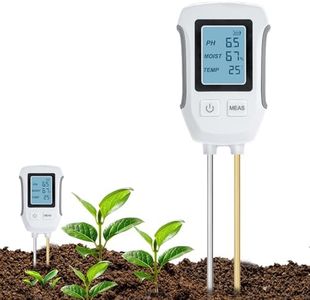
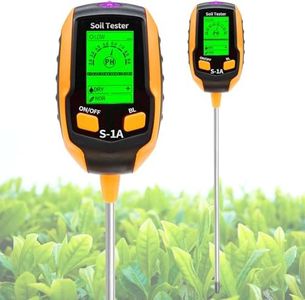
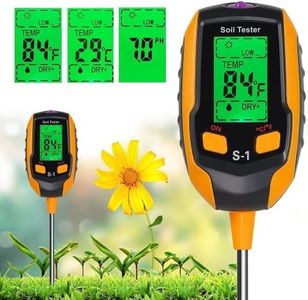


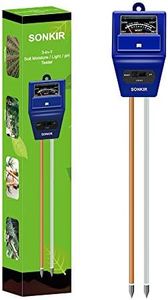
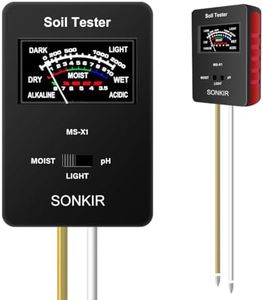
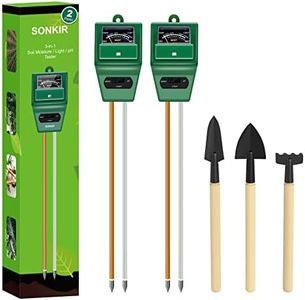
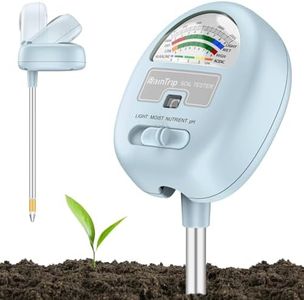
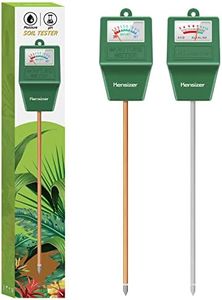
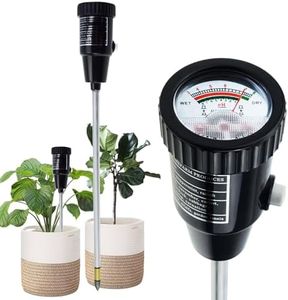
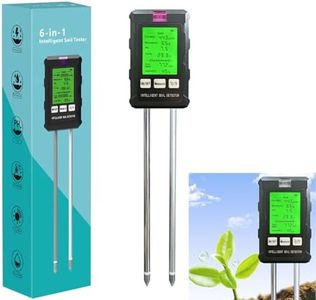
![[Upgraded]](https://images-proxy.bestreviews.guide/MN4dwSh53rtrRb0SpRcpF-ppol8=/0x300/https://m.media-amazon.com/images/I/41EL4vJQVGL._AC_CX679_.jpg)


